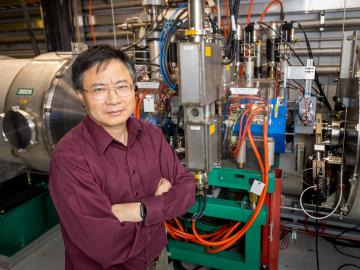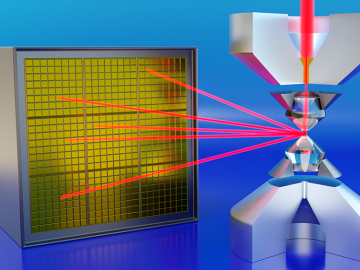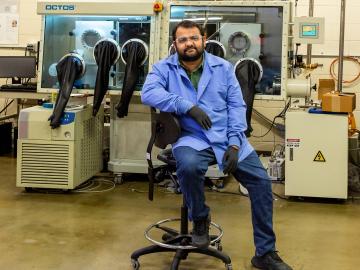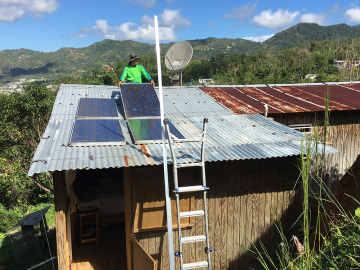
Filter News
Area of Research
- Advanced Manufacturing (4)
- Biology and Environment (13)
- Computational Biology (1)
- Computational Engineering (2)
- Computer Science (6)
- Electricity and Smart Grid (1)
- Energy Science (50)
- Energy Sciences (1)
- Functional Materials for Energy (2)
- Fusion and Fission (10)
- Fusion Energy (7)
- Isotopes (3)
- Materials (34)
- Materials for Computing (5)
- Mathematics (1)
- National Security (6)
- Neutron Science (34)
- Nuclear Science and Technology (6)
- Supercomputing (17)
News Type
News Topics
- (-) Artificial Intelligence (33)
- (-) Biomedical (18)
- (-) Clean Water (14)
- (-) Composites (16)
- (-) Energy Storage (50)
- (-) Fusion (19)
- (-) Neutron Science (42)
- (-) Security (4)
- (-) Summit (11)
- 3-D Printing/Advanced Manufacturing (57)
- Advanced Reactors (18)
- Big Data (26)
- Bioenergy (26)
- Biology (31)
- Biotechnology (6)
- Buildings (31)
- Chemical Sciences (31)
- Computer Science (70)
- Coronavirus (15)
- Critical Materials (13)
- Cybersecurity (9)
- Emergency (2)
- Environment (67)
- Exascale Computing (11)
- Fossil Energy (1)
- Frontier (10)
- Grid (28)
- High-Performance Computing (33)
- Hydropower (6)
- Irradiation (3)
- Isotopes (15)
- ITER (5)
- Machine Learning (19)
- Materials (70)
- Materials Science (54)
- Mathematics (3)
- Mercury (3)
- Microscopy (21)
- Molten Salt (6)
- Nanotechnology (25)
- National Security (13)
- Nuclear Energy (36)
- Partnerships (11)
- Physics (11)
- Polymers (15)
- Quantum Computing (9)
- Quantum Science (18)
- Simulation (16)
- Software (1)
- Space Exploration (11)
- Statistics (1)
- Transportation (52)
Media Contacts

Technologies developed by researchers at ORNL have received six 2023 R&D 100 Awards.

Yarom Polsky, director of the Manufacturing Science Division, or MSD, at the Department of Energy’s Oak Ridge National Laboratory, has been elected a Fellow of the American Society of Mechanical Engineers, or ASME.

When opportunity meets talent, great things happen. The laser comb developed at ORNL serves as such an example.

ORNL scientists found that a small tweak created big performance improvements in a type of solid-state battery, a technology considered vital to broader electric vehicle adoption.

Nonfood, plant-based biofuels have potential as a green alternative to fossil fuels, but the enzymes required for production are too inefficient and costly to produce. However, new research is shining a light on enzymes from fungi that could make biofuels economically viable.

For decades, scientists sought a way to apply the outstanding analytical capabilities of neutrons to materials under pressures approaching those surrounding the Earth’s core.

Marm Dixit, a Weinberg Distinguished Staff Fellow at ORNL has received the 2023 Rosalind Franklin Young Investigator Award.

Scientists at ORNL developed a competitive, eco-friendly alternative made without harmful blowing agents.

ORNL researchers Ben Ollis and Max Ferrari will be in Adjuntas to join the March 18 festivities but also to hammer out more technical details of their contribution to the project: making the microgrids even more reliable.

Warming a crystal of the mineral fresnoite, ORNL scientists discovered that excitations called phasons carried heat three times farther and faster than phonons, the excitations that usually carry heat through a material.


